Discover 35 hidden attractions, cool sights, and unusual things to do in Tunis (Tunisia). Don't miss out on these must-see attractions: Bardo National Museum, Medina of Tunis, and Baths of Antoninus. Also, be sure to include Kasbah Square in your itinerary.
Below, you can find the list of the most amazing places you should visit in Tunis (Tunis).
Table of Contents
Bardo National Museum

Also known as: المتحف الوطني بباردو
Museum of Tunisian heritage and Carthage. The Bardo National Museum is a museum of Tunis, Tunisia, located in the suburbs of Le Bardo.
It is one of the most important museums in the Mediterranean region and the second museum of the African continent after the Egyptian Museum of Cairo by richness of its collections. It traces the history of Tunisia over several millennia and across several civilizations through a wide variety of archaeological pieces.
Housed in an old beylical palace since 1888, it has been the setting for the exhibition of many major works discovered since the beginning of archaeological research in the country. Originally called Alaoui Museum (Arabic: المتحف العلوي, romanized: al-Matḥaf al-ʿAlawī), named after the reigning bey at the time, it takes its current name of Bardo Museum after the independence of the country even if the denomination is attested before that date.
The museum houses one of the largest collections of Roman mosaics in the world, thanks to excavations at the beginning of 20th century in various archaeological sites in the country including Carthage, Hadrumetum, Dougga and Utica. Generally, the mosaics of Bardo, such as the Virgil Mosaic, represent a unique source for research on everyday life in Roman Africa. From the Roman era, the museum also contains a rich collection of marble statues representing the deities and the Roman emperors found on different sites including those of Carthage and Thuburbo Majus.
The museum also houses pieces discovered during the excavations of Libyco-Punic sites including Carthage, although the National Museum of Carthage is the primary museum of the Carthage archaeological site. The essential pieces of this department are grimacing masks, terracotta statues and stelae of major interest for Semitic epigraphy, and the stele of the priest and the child. The museum also houses Greek works discovered especially in the excavations of the shipwreck of Mahdia, whose emblematic piece remains the bust of Aphrodite in marble, gnawed by the sea.
The Islamic Department contains, in addition to famous works such as the Blue Qur'an of Kairouan, a collection of ceramics from the Maghreb and Anatolia.
In order to increase the reception capacity and optimize the presentation of the collections, the museum is the subject of a vast operation which was to be completed initially in 2011 but was not finished until 2012 due to the Tunisian Revolution. The work concerns the increase of the exhibition surfaces by adding new buildings and redeploying the collections. The project aims to make the museum a major pole for a quality cultural development, so that the visitor can appreciate the artistic pieces deposited.
On March 18, 2015, an Islamist terrorist group attacked the museum and took tourists hostage in the building. The attack, which killed 22 people including 21 foreign tourists, was claimed by ISIS.[1]
Address: Le Bardo, 2079 Tunis
Medina of Tunis

Also known as: مدينة تونس العتيقة
The Medina of Tunis is the medina quarter of Tunis, the capital of Tunisia. It has been a UNESCO World Heritage Site since 1979.
The Medina contains some 700 monuments, including palaces, mosques, mausoleums, madrasas and fountains dating from the Almohad and the Hafsid periods.[2]
Baths of Antoninus
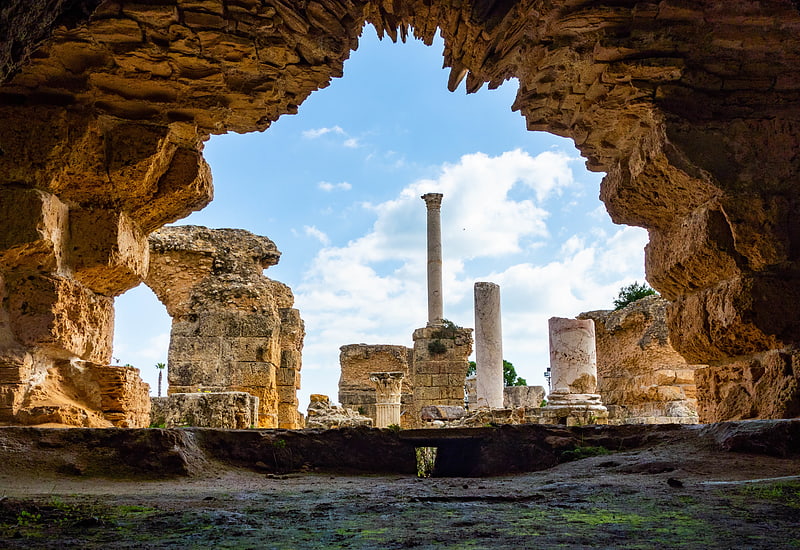
Also known as: حمامات أنطونيوس بقرطاج
Thermal baths in Tunisia. The Baths of Antoninus or Baths of Carthage, located in Carthage, Tunisia, are the largest set of Roman thermae built on the African continent and one of three largest built in the Roman Empire. They are the largest outside mainland Italy. The baths are also the only remaining Thermae of Carthage that dates back to the Roman Empire's era. The baths were built during the reign of Roman Emperor Antoninus Pius.
The baths are at the South-East of the archaeological site, near the presidential Carthage Palace. The archaeological excavations started during the Second World War and concluded by the creation of an archaeological park for the monument. It is also one of the most important landmarks of Tunisia.
The baths are today part of the Archaeological site of Carthage on the list of World Heritage sites of UNESCO. On 17 February 2012, the Tunisian government proposed the Roman hydraulic complex Zaghouan-Carthage, that the baths are part of, as a future World Heritage site.[3]
Kasbah Square

The National Monument of the Kasbah, more simply called the National Monument, is a memorial monument and a prominent symbol of several events in Tunisia. It is located in the center of the Kasbah Square in Tunis, facing the Town Hall.
The monument was designed and executed by the Tunisian sculptor Abdelfattah Boussetta In 1989.
It also appears as a background image on the Tunisian ID cards.[4]
Al-Zaytuna Mosque

Also known as: جامع الزيتونة
Mosque in Tunis, Tunisia. Al-Zaytuna Mosque, also known as Ez-Zitouna Mosque, and El-Zituna Mosque, is a major mosque at the center of the Medina of Tunis in Tunis, Tunisia.
The mosque is the oldest in the Capital of Tunisia and covers an area of 5,000 square metres (1.2 acres) with nine entrances. It has 160 authentic columns brought originally from the ruins of the old city of Carthage. The mosque is known to host one of the first and greatest universities in the history of Islam. Many Muslim scholars were graduated from the Al-Zaytuna for over a thousand years. From Ibn 'Arafa, one of the greatest scholars of Islam, Imam Maziri, the great traditionalist and jurist to the famous Tunisian poet Aboul-Qacem Echebbi and countless others all taught there.[5]
Address: 30 Rue Jamaa Ezzitouna, Tunis
Cathedral of St. Vincent de Paul
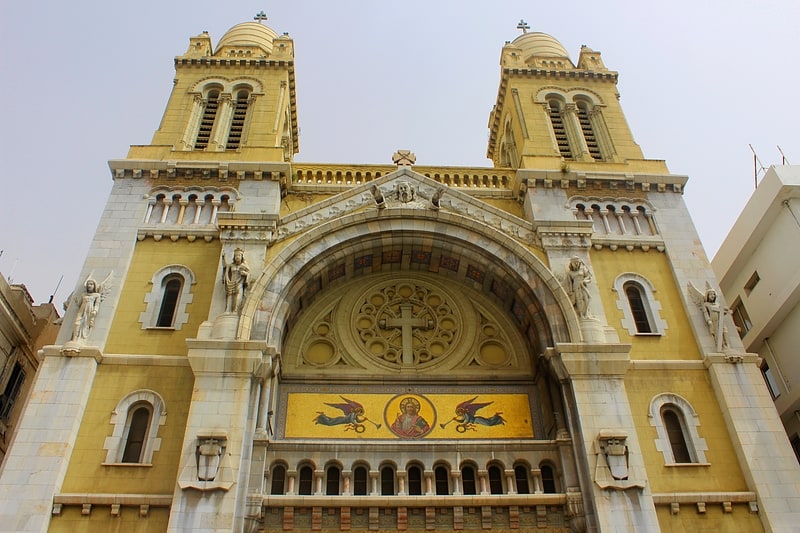
Also known as: كاتدرائية تونس
Cathedral in Tunis, Tunisia. The Cathedral of St. Vincent de Paul is a Roman Catholic church located in Tunis, Tunisia. The cathedral is dedicated to Saint Vincent de Paul, patron saint of charity. It is the episcopal see of the Archdiocese of Tunis and is situated at Place de l'Indépendence in Ville Nouvelle, a crossroads between Avenue Habib Bourguiba and Avenue de France, opposite the French embassy.
The church, designed by L. Bonnet-Labranche, was built in a mixture of styles, including Moorish revival, Gothic revival, and Neo-Byzantine architectural traditions. The cornerstone was laid in 1890, and construction began in 1893. The church was opened on Christmas in 1897, albeit without its belltowers owing to a shortage of funds. The reinforced concrete towers were completed in 1910 using the Hennebique technique.
Cardinal Charles Lavigerie laid the first stone for a church on 7 November 1881, a little further down Avenue de la Marine (now Avenue Habib Bourguiba). This was a pro-cathedral; the cathedral of the archdiocese (then called Carthage) being the Saint Louis Cathedral. The pro-cathedral was built quickly, but its condition soon deteriorated due to the adverse ground conditions, necessitating the construction of the current cathedral.
Prior to independence, there were 255,000 Catholics in Tunisia in 1956. The number of Roman Catholics in Tunisia fell rapidly following Tunisian independence from France. A modus vivendi reached between the Republic of Tunisia and the Vatican in 1964 resulted in the transfer of selected buildings to the Tunisian state for public use, including the Acropolium of Carthage in Carthage. However, the Cathedral of St. Vincent de Paul remains under the ownership and operation of the Roman Catholic Church in Tunisia.[6]
Address: 53 Rue Mokhtar Attia, Tunis
Bab el Bhar
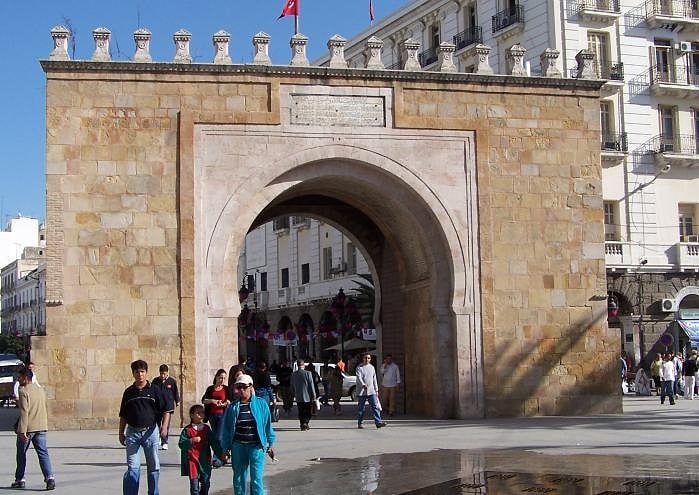
Also known as: باب البحر
Monument in Tunis, Tunisia. Bab el Bhar, also known as Porte De France, is a city gate in Tunis, the capital of Tunisia. It marks the separation between the Medina of Tunis and the European city. The gate is made up of a lowered archway and topped by a crenellated parapet.[7]
Souk Sidi Sridek

Also known as: سوق سيدي سريدك
Souk Sidi Sridek is one of the popular souks of the medina of Tunis. It is specialized in selling daily use products.[8]
Dar Bach Hamba

Dar Bach Hamba is an old palace in the medina of Tunis.[9]
Address: 40 rue Kouttab el Ouzir / 9 rue Bach Hamba, Souq el Blatt - La Médina, Tunis
Souk El Kouafi
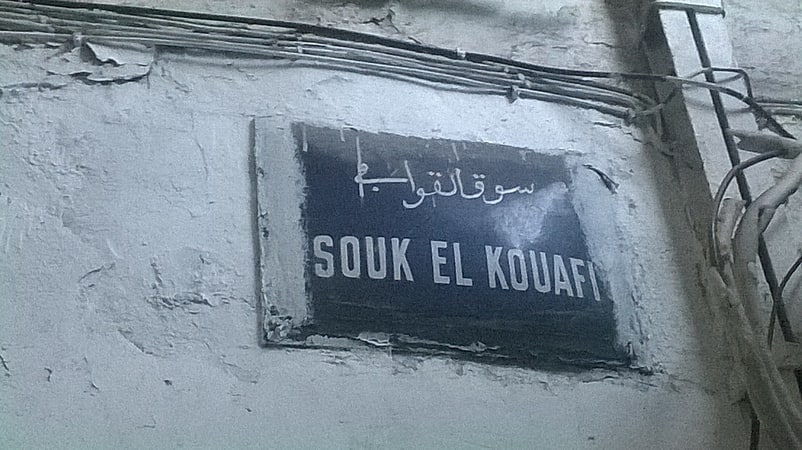
Also known as: سوق القوافي
Souk El Kouafi is one of the souks of the medina of Tunis, specialized in selling women caps.[10]
Dar Ben Achour

Library in Tunis, Tunisia. Dar Ben Achour is a palace in the medina of Tunis, built in the 17th century and located in the Pasha Street. Nowadays, it houses the library of the city of Tunis.
It was occupied by Sheikh Aziz Bouattour, the Grand Vizier of Tunis from 1882 to 1907 and grandfather of Muhammad al-Tahir ibn Ashur. He bequeathed the house to the latter before it returned to Mohamed Fadhel Ben Achour.
The house was acquired in 1970 by the municipality of Tunis. After a restoration, it is transformed in 1983 into a library whose mission is to collect and preserve historical documents related to the city of Tunis and Tunisians. In 1990, it also became the headquarters of the Tunisian Association of Monuments and Sites.[11]
Dar Othman

Also known as: دار عثمان
Tourist attraction in Tunis, Tunisia. Dar Othman is one of the palaces of the medina of Tunis. The residence is located in the south of the medina, 16 El Mebazaâ Street.[12]
Address: 47 Rue d'Iran, 1002 Tunis
Souk Es Sekajine

Also known as: سوق السكاجين
Souk Es Sekajine or Souk Es Sarragine is one of the souks of the medina of Tunis. specializing in leather goods, saddles, and horse harnesses.[13]
Dar Bou Hachem
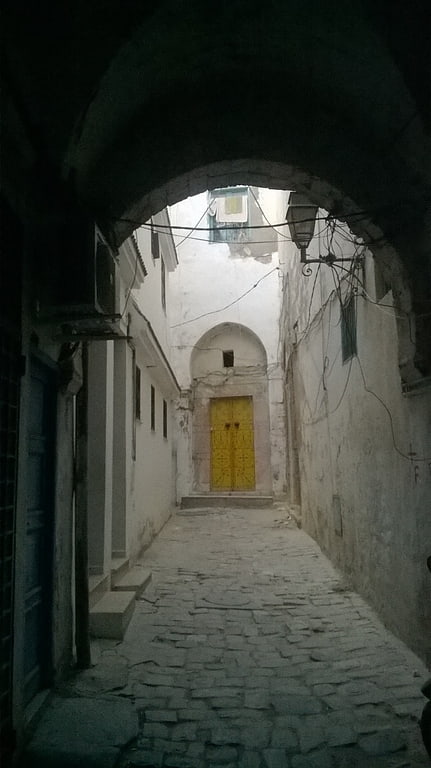
Palace. Dar Bou Hachem is a palace in the medina of Tunis.[14]
Kasbah Mosque
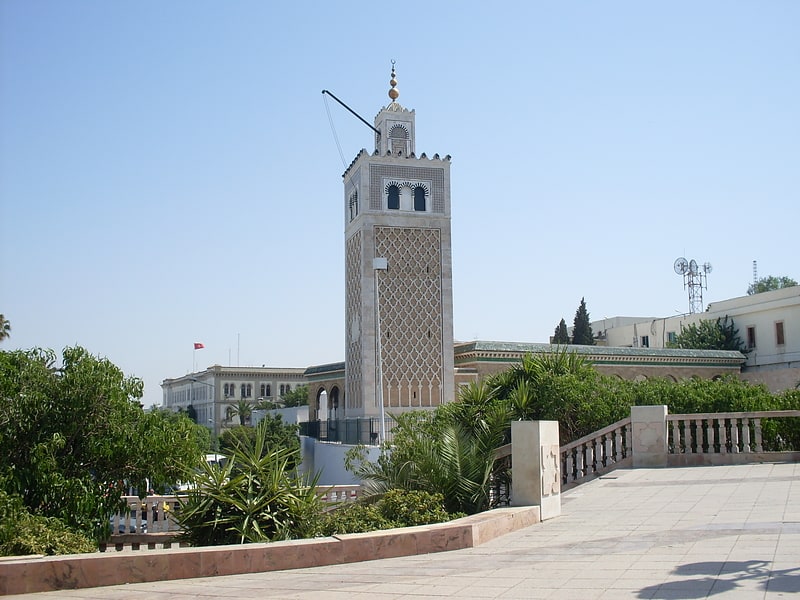
Also known as: جامع القصبة
Mosque in Tunis, Tunisia. Kasbah Mosque is a mosque in Tunis, Tunisia. It is a listed as a Historical Monument.[15]
Address: Rue du 2 Mars, 1934 Tunis
Khaznadar Palace
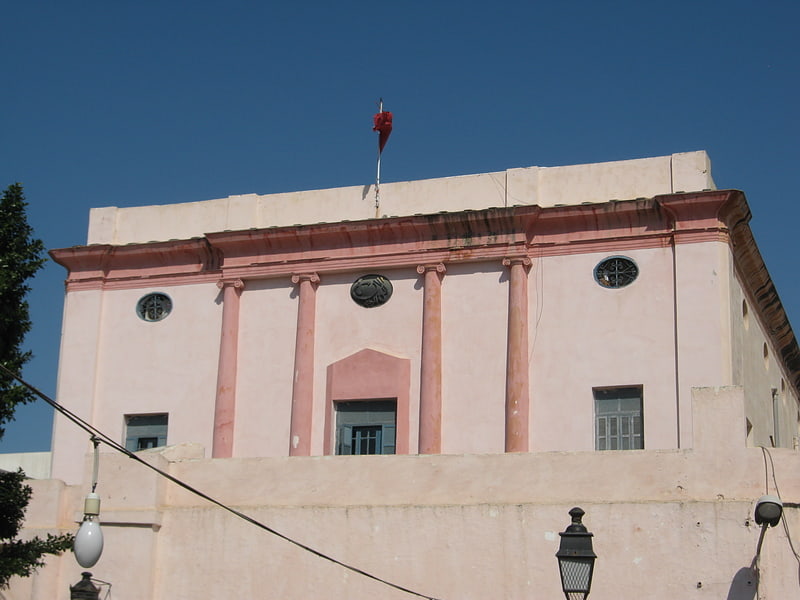
Palace. The Khaznadar Palace is a Tunisian palace in the neighborhood of Halfaouin. It is one of the palaces of the Medina of Tunis.[16]
Hammouda Pacha Mosque
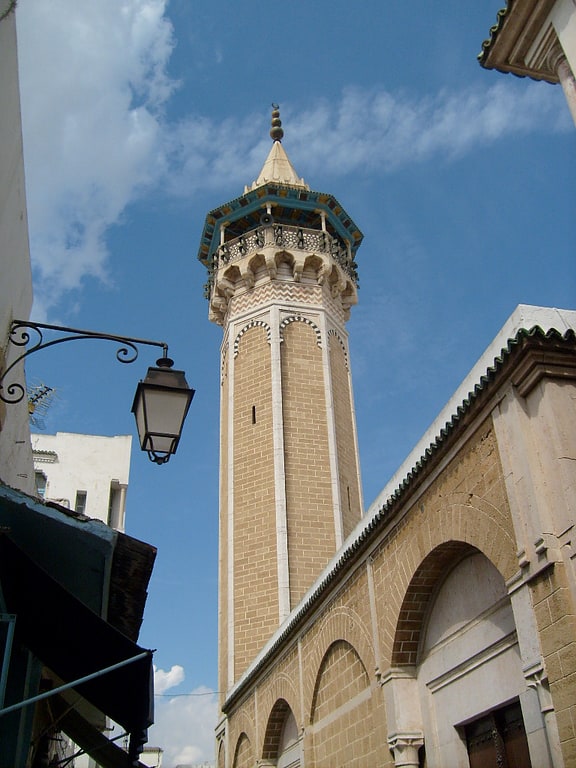
Also known as: مسجد حمودة باشا
Mosque in Tunis, Tunisia. Hammouda Pacha Mosque or Hamouda Pacha al Mouradi is a mosque in Tunis, Tunisia. It is an official historical monument.[17]
Address: Rue Sidi Ben Arous, Tunis
Souk El Beransia
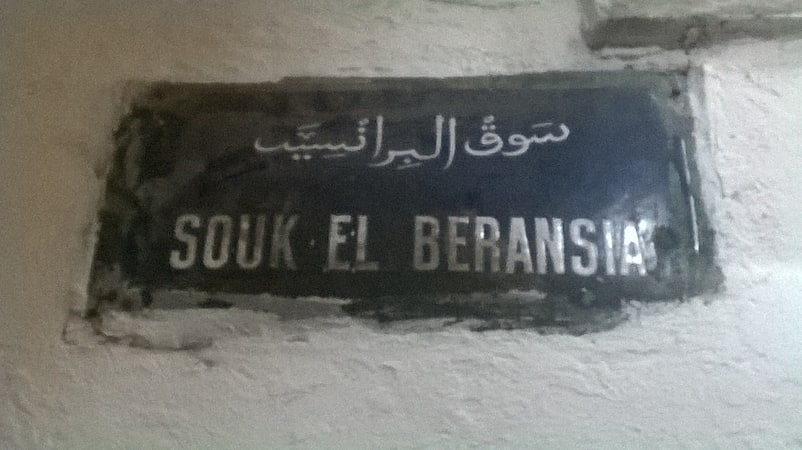
Also known as: سوق البرانسية
Souk El Beransia is one of the souks of the medina of Tunis.[18]
Souk Edabaghine
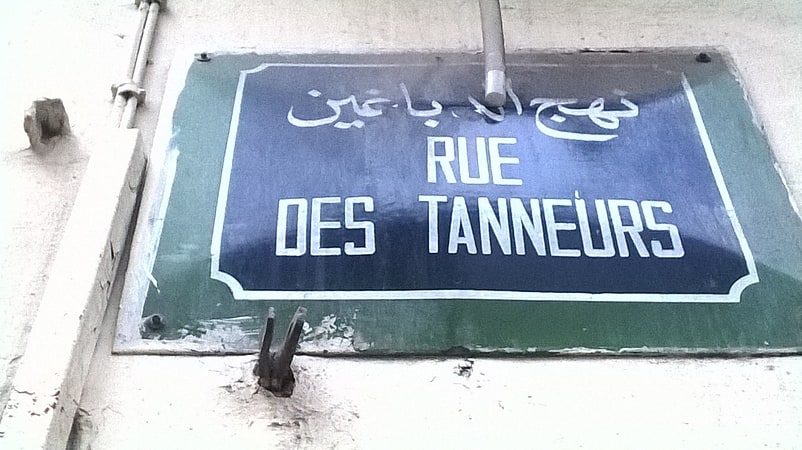
Also known as: نهج الدباغين
Bazar in Tunis, Tunisia. Souk Edabaghine, is one of the souks of the medina of Tunis. It is called Edabaghine, the Arabic word for tanners, because it was specialized in leather tanning.
Since this was considered a polluting industry, the souk was located at the outskirts of the medina. The souk connects Mongi Slim Street, previously named Street of Maltese, and Rome Street.
When the tanning industry disappeared, antique and used book sellers in all languages and on all subjects, took over the souk. Today there are about twenty book sellers.[19]
Place de Barcelone
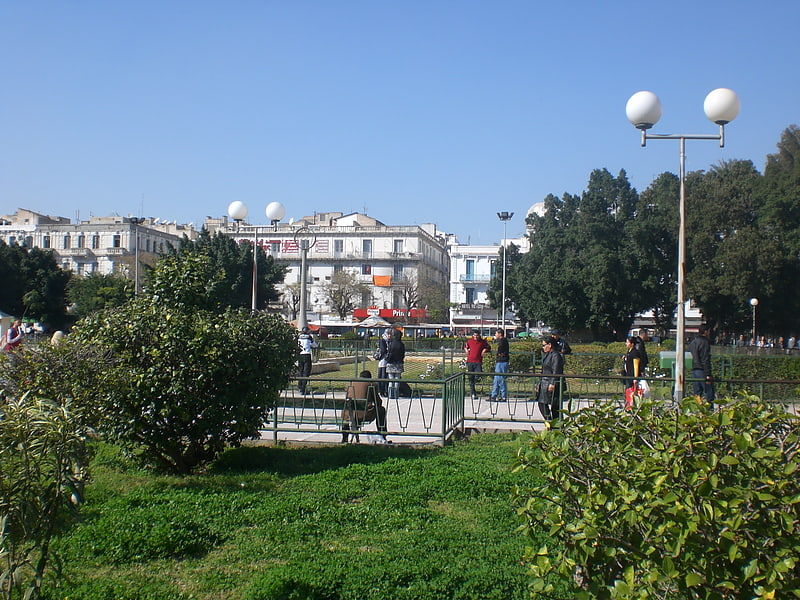
Subway station in Tunis, Tunisia. Place de Barcelone is a square in the center Tunis, capital of Tunisia.[20]
Souk El Fekka
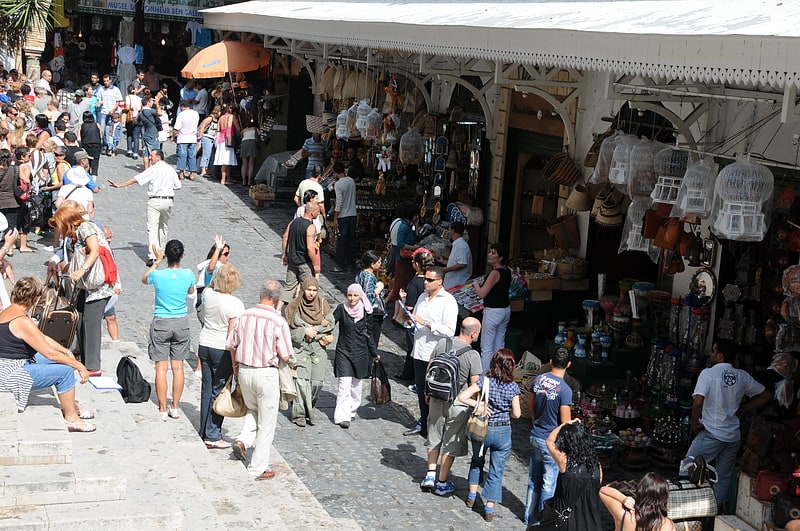
Also known as: سوق الفكة
Souk El Fekka is one of the souks of the medina of Tunis.[21]
Souk El Kachachine

Also known as: سوق القشاشين
Souk El Kachachine is one of the souks of the medina of Tunis. It is specialized in selling second-hand clothes.[22]
Hayreddin Palace

Also known as: قصر خير الدين
Museum in Tunis, Tunisia. Hayreddin Palace is an old palace in the Medina of Tunis. It is the current Museum of Tunis.[23]
Souk de la Commission
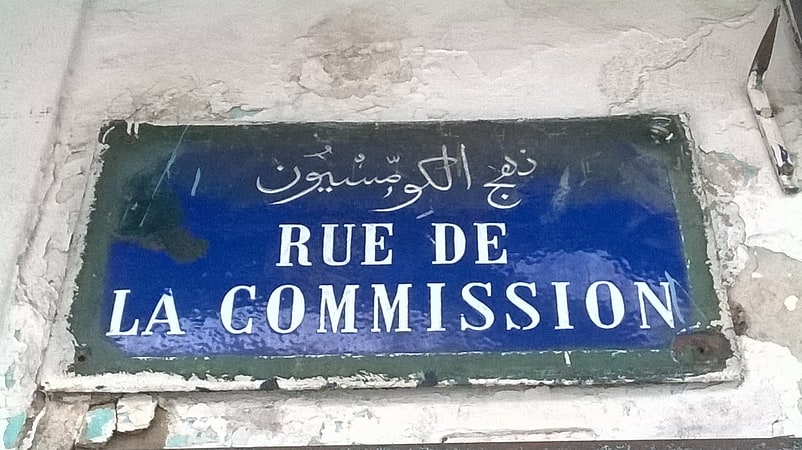
Also known as: نهج الكومسيون
Souk De la Commission is one of the souks of the medina of Tunis.[24]
Sidi Belhassen El Halfaoui Mosque
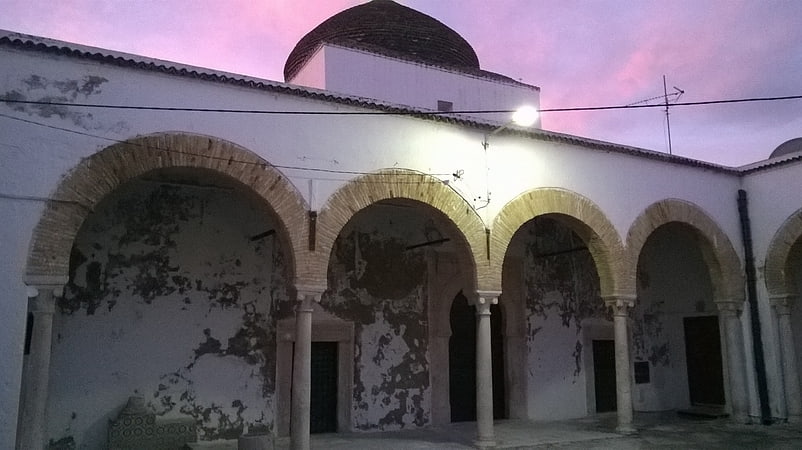
Mosque. Sidi Bellahssan El Halfaoui Mosque is a Tunisian mosque in the Halfaouine neighborhood in the Medina of Tunis in Tunisia.
It was built in 1640, in the Mouradite era, to commemorate Bellahssan El Halfaoui, one of the Sidi Mohammed El Halfaoui descendants, a practitioner of tariqa and the shadhili. His mausoleum is close to the mosque, on Hammam El Remimi Street.[25]
Dar Lasram
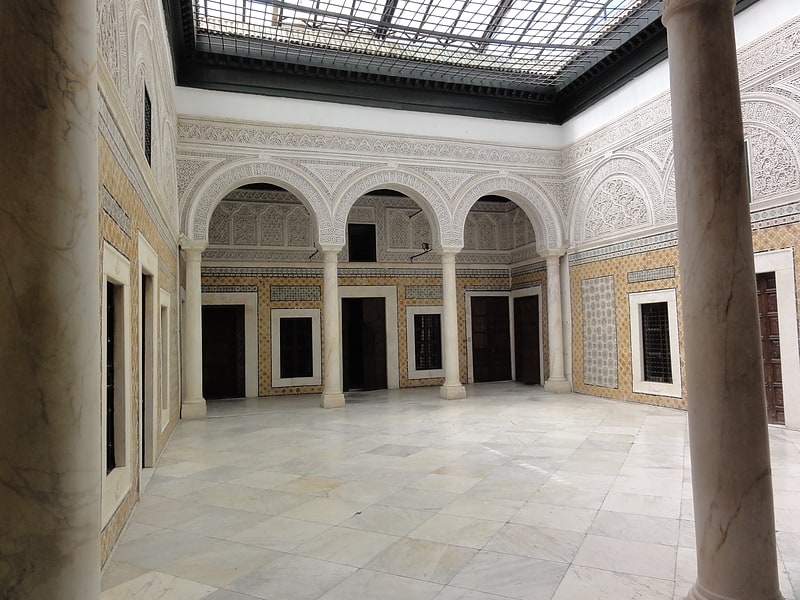
Also known as: دار الأصرم
Museum in Tunis, Tunisia. Dar Lasram is one of the palaces of the medina of Tunis. It is located at 24 Tribunal Street.[26]
Address: 24 Rue du Tribunal, 1006 Tunis
Théâtre municipal de Tunis
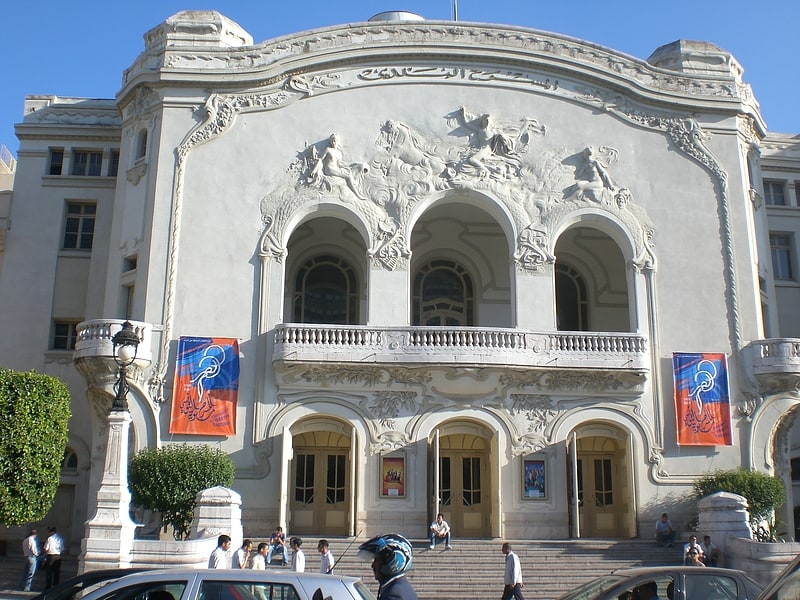
Also known as: المسرح البلدي بتونس
Performing arts theater in Tunis, Tunisia. The Théâtre municipal de Tunis in Tunisia was first opened on November 20, 1902 and currently showcases opera, ballet, symphonic concerts and dramas featuring numerous Tunisian, Arab and international actors.[27]
Address: Avenue Habib Bourguiba, 1000 تونس
Sidi Belhassen Chedly Mausoleum
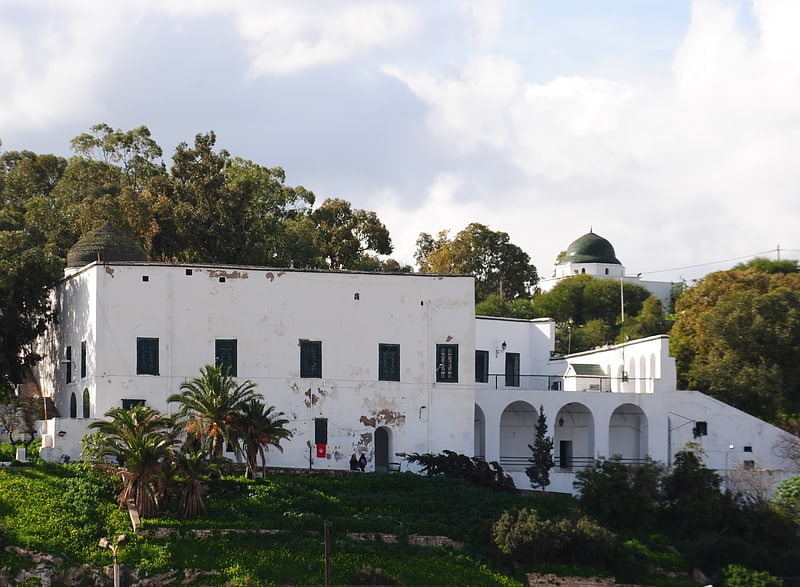
Sidi Belhassen Chedly Mausoleum is a mausoleum in Tunisia, located near the Jellaz cemetery south of Tunis.[28]
Bab Saadoun
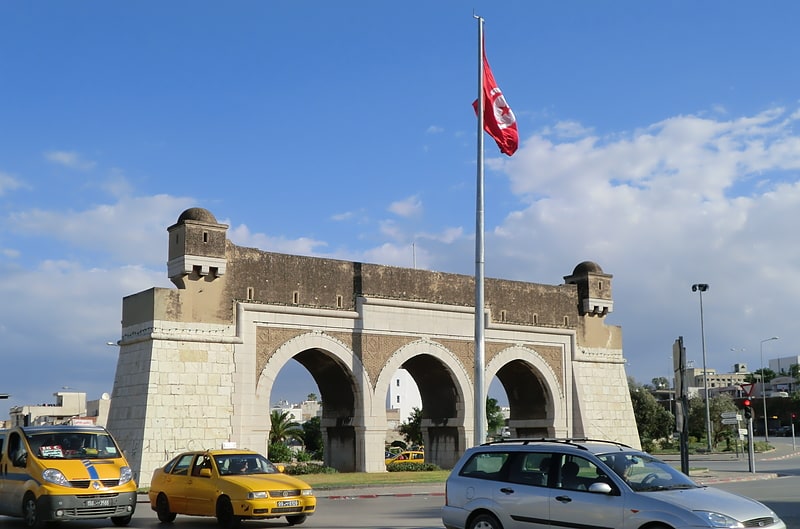
Also known as: باب سعدون
Monument in Tunis, Tunisia. Bab Saadoun is one of the gates of the medina of Tunis, the capital of Tunisia.
First constructed circa 1350 on the edge of the suburb of Bab Souika, it originally had only one narrow arch and it was replaced in 1881 (at the same time as the arch at Bab el Khadra) by a gate with three arches, better adapted to the volume of traffic.
Controlling the routes to Béja, Bizerte and El Kef, it owes its name to the saint Sidi Bou Saadoun.[29]
Address: Rue Bab Sadoune, Tunis
Youssef Dey Mosque
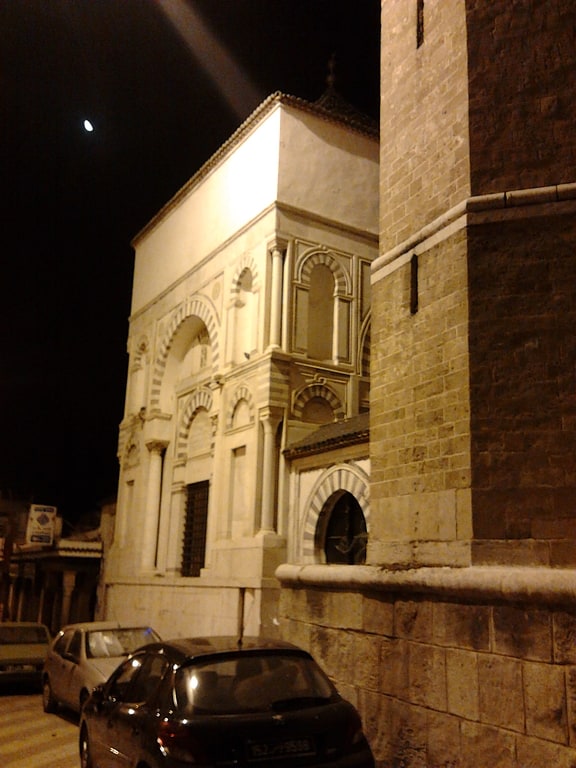
Also known as: جامع يوسف داي
Mosque in Tunis, Tunisia. Youssef Dey Mosque, also known as Al B'chamqiya, is a 17th-century mosque in Tunis, Tunisia, located in Medina area of the city. The mosque is considered significant as it was the first Ottoman-Turkish mosque to be built in Tunis.
An official Historical Monument, it operated primarily as public speaking venue before becoming a real mosque by Youssef Dey in 1631. At the time it was the 11th mosque to be built in the capital. In the late nineteenth century it underwent extensive restoration, ordered by Ali Bey. A decree in 1926 saw the mosque become an annex of the University of Ez-Zitouna.[30]
Address: Rue Sidi Ben Ziyad Medina, 1006 Tunis
Ksar Mosque
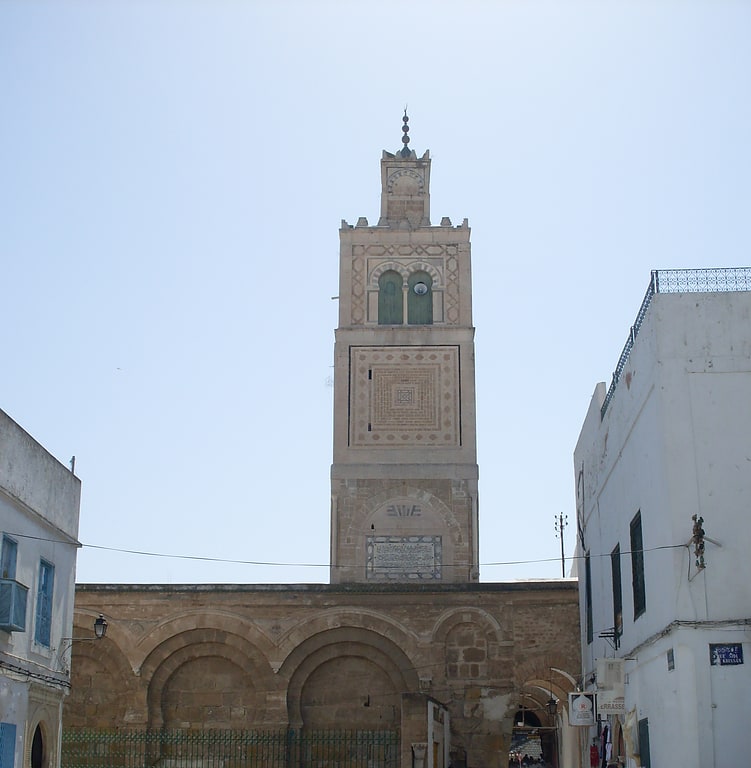
Also known as: جامع القصر
Mosque in Tunis, Tunisia. Ksar Mosque or Jemaâ Al Ksar, also of the Hanafi rite, is a mosque in Tunis, Tunisia.[31]
El Hentati Mosque

Also known as: جامع الهنتاتي
Mosque in Tunis, Tunisia. El Hentati Mosque ' is a small mosque in the west of the medina of Tunis, in souk El Leffa.[32]
Saheb Ettabaâ Mosque
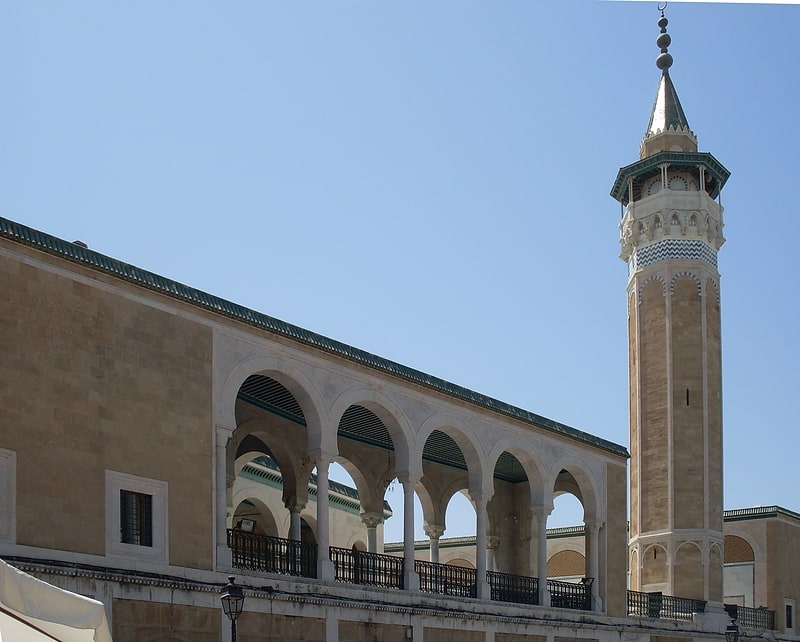
Also known as: جامع صاحب الطابع
Mosque in Tunis, Tunisia. Saheb Ettabaâ Mosque, also known as Youssef Saheb Al Tabaa Mosque, is a mosque in Tunis, Tunisia, located in the Halfaouine area of the city. It is an official Historical Monument. It is the last great mosque built in Tunis before the establishment of French protectorate in 1881.[33]
Tronja Mosque

Also known as: مسجد ترنجة
Mosque. The Tronja Mosque is a Tunisian mosque, located in the Tronja area, which is a part of the Bab Souika suburb, in the north of the medina of Tunis.[34]
Souk Sidi Mahrez
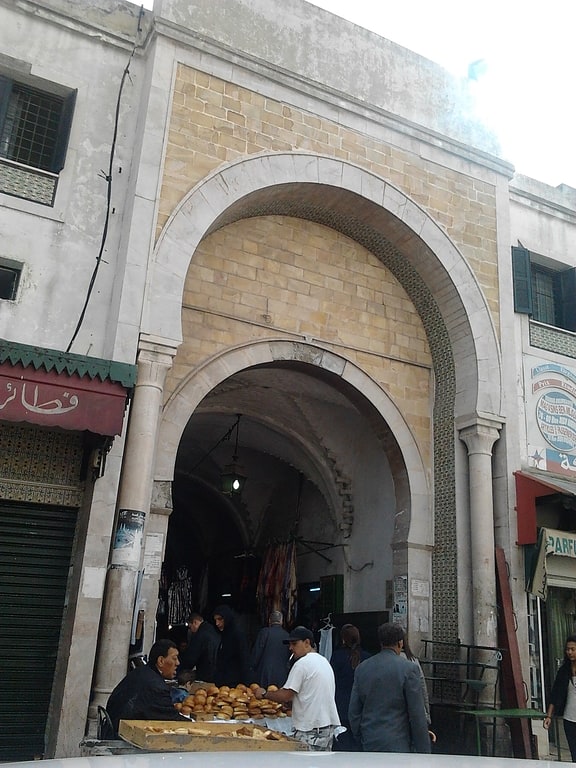
Also known as: سوق سيدي محرز
Souk Sidi Mahrez is one of the popular souks of the medina of Tunis. It is specialized in selling fabrics.[35]